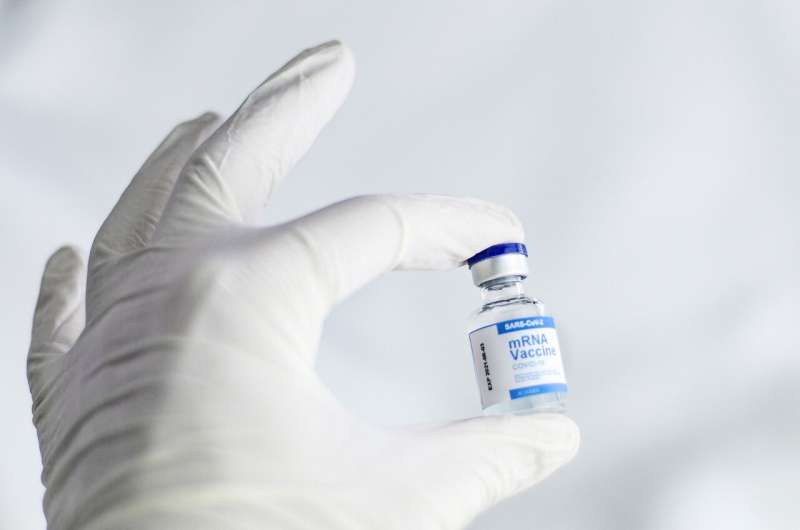Study identifies nearly 600 genetic loci associated with anti-social behavior, alcohol use, opioid addiction and more
The study, published today in the journal Nature Neuroscience, is one of the largest genome-wide association studies ever conducted
Peer-Reviewed PublicationRICHMOND, Va. (Aug. 26, 2021) — An analysis of data from 1.5 million people has identified 579 locations in the genome associated with a predisposition to different behaviors and disorders related to self-regulation, including addiction and child behavioral problems.
With these findings, researchers have constructed a genetic risk score — a number reflecting a person’s overall genetic propensity based on how many risk variants they carry — that predicts a range of behavioral, medical and social outcomes, including education levels, obesity, opioid use disorder, suicide, HIV infections, criminal convictions and unemployment.
“[This study] illustrates that genes don’t code for a particular disorder or outcome; there are no genes ‘for’ substance use disorder, or ‘for’ behavior problems,” said joint senior author Danielle Dick, Ph.D., Commonwealth Professor of Psychology and Human and Molecular Genetics at Virginia Commonwealth University. “Instead, genes influence the way our brains are wired, which can make us more at risk for certain outcomes. In this case, we find that there are genes that broadly influence self-control or impulsivity, and that this predisposition then confers risk for a variety of life outcomes.”
The study, “Multivariate analysis of 1.5 million people identifies genetic associations with traits related to self-regulation and addiction,” was published today in the journal Nature Neuroscience and was conducted by a consortium of 26 researchers at 17 institutions in the United States and the Netherlands.
It was led by Dick; Philipp Koellinger, Ph.D., professor of social science genetics at the University of Wisconsin Madison and Vrije Universiteit Amsterdam; Kathryn Paige Harden, Ph.D., professor of psychology at the University of Texas at Austin; and Abraham A. Palmer, Ph.D., professor of psychiatry at the University of California, San Diego.
The study is one of the largest genome-wide association studies ever conducted, pooling data from an effective sample size of 1.5 million people of European descent. The researchers’ genetic risk score has one of the largest effect sizes — a measurement of the prediction power — of any genetic risk score for a behavioral outcome to date.
“It demonstrates the far-reaching effects of carrying a genetic liability toward lower self-control, impacting many important life outcomes,” said Dick, a professor in the Department of Psychology in the College of Humanities and Sciences and the Department Human and Molecular Genetics in the School of Medicine at VCU. “We hope that a greater understanding of how individual genetic differences contribute to vulnerability can reduce stigma and blame surrounding many of these behaviors, such as behavior problems in children and substance use disorders.”
The identification of the more than 500 genetic loci is important, the researchers said, because it provides new insight into our understanding of behaviors and disorders related to self-regulation, collectively referred to as “externalizing” and that have a shared genetic liability.
“We know that regulating behavior is a critical component of many important life outcomes — from substance use and behavioral disorders, like ADHD, to medical outcomes ranging from suicide to obesity, to educational outcomes like college completion,” Dick said.
Characterizing the genetic contributions to self-regulation can be helpful in myriad ways, she said.
“It allows us to better understand the biology behind why some people are more at risk, which can assist with medication development, and it can allow us to know who is more at risk, so we can put early intervention and prevention programs in place,” she said. “Identifying genetic risk factors is a critical component of precision medicine, which has the goal of using information about an individual’s genetic and environmental risk factors to deliver more tailored, effective intervention specific to that individual’s risk profile.”
The researchers noted, however, that having a higher risk profile isn’t necessarily a bad thing.
“For example, CEOs, entrepreneurs and fighter pilots are often higher on risk taking,” Dick said. “DNA is not destiny. We all have unique genetic codes, and we’re all at risk for something; but understanding one’s predisposition can be empowering — it can help individuals understand their strengths, and their potential challenges, and act accordingly.”
For more information about the study and its findings, please visit this FAQ.
###
About VCU and VCU Health
Virginia Commonwealth University is a major, urban public research university with national and international rankings in sponsored research. Located in downtown Richmond, VCU enrolls nearly 30,000 students in 238 degree and certificate programs in the arts, sciences and humanities. Twenty-three of the programs are unique in Virginia, many of them crossing the disciplines of VCU’s 11 schools and three colleges. The VCU Health brand represents the VCU health sciences academic programs, the VCU Massey Cancer Center and the VCU Health System, which comprises VCU Medical Center (the only academic medical center in the region), Community Memorial Hospital, Tappahannock Hospital, Children’s Hospital of Richmond at VCU, and MCV Physicians. The clinical enterprise includes a collaboration with Sheltering Arms Institute for physical rehabilitation services. For more, please visit vcu.edu and vcuhealth.org.
JOURNAL
Nature Neuroscience
SUBJECT OF RESEARCH
Not applicable
ARTICLE TITLE
Multivariate analysis of 1.5 million people identifies genetic associations with traits related to self-regulation and addiction
ARTICLE PUBLICATION DATE
26-Aug-2021

